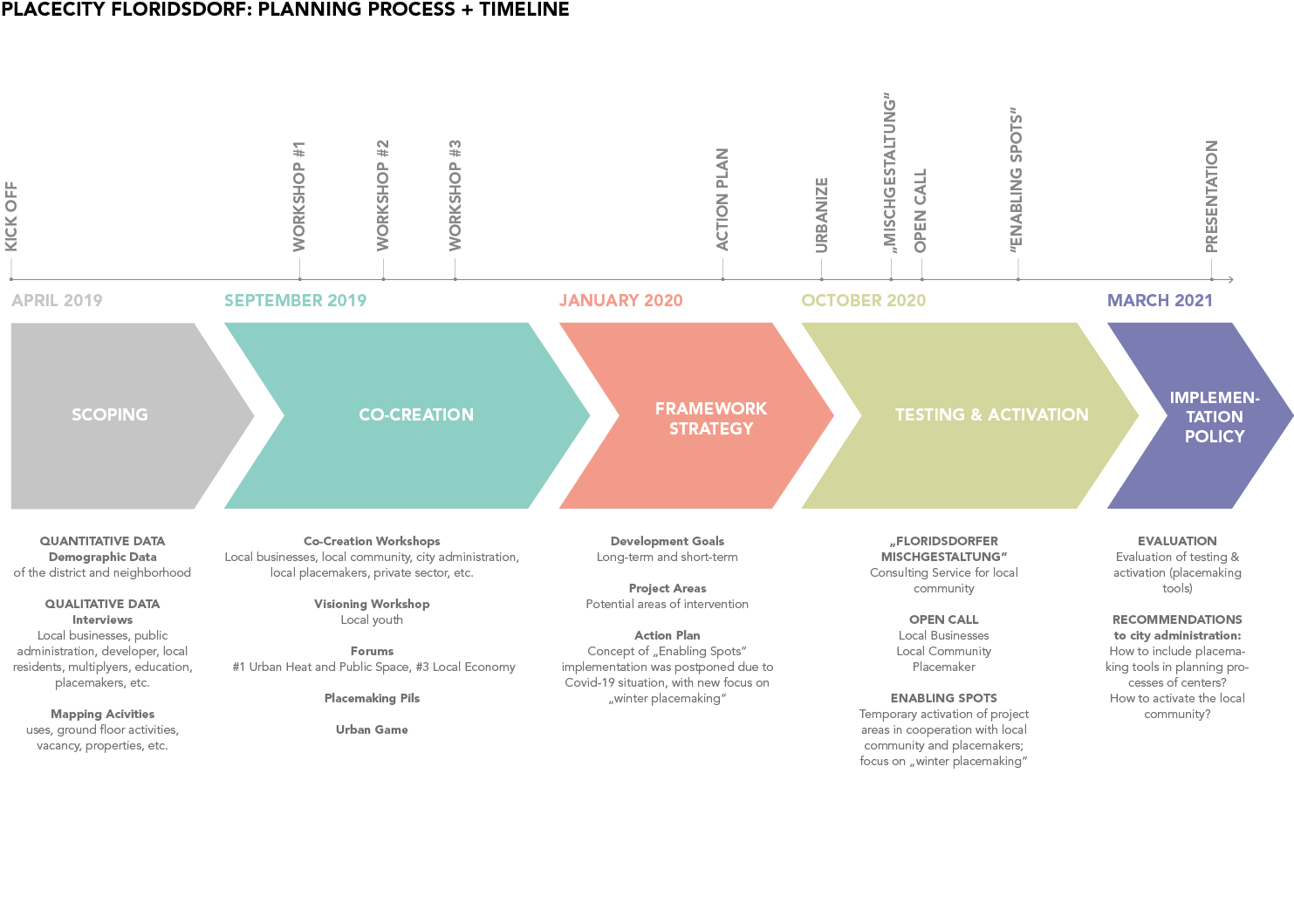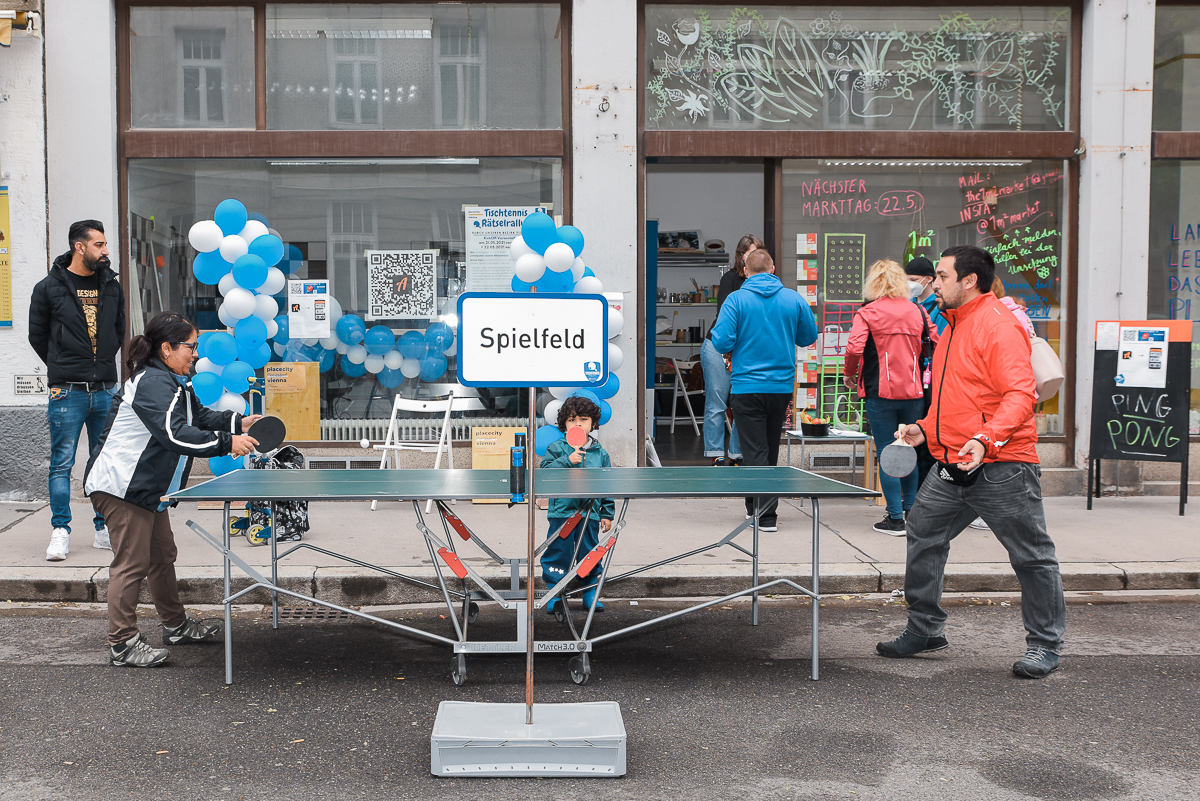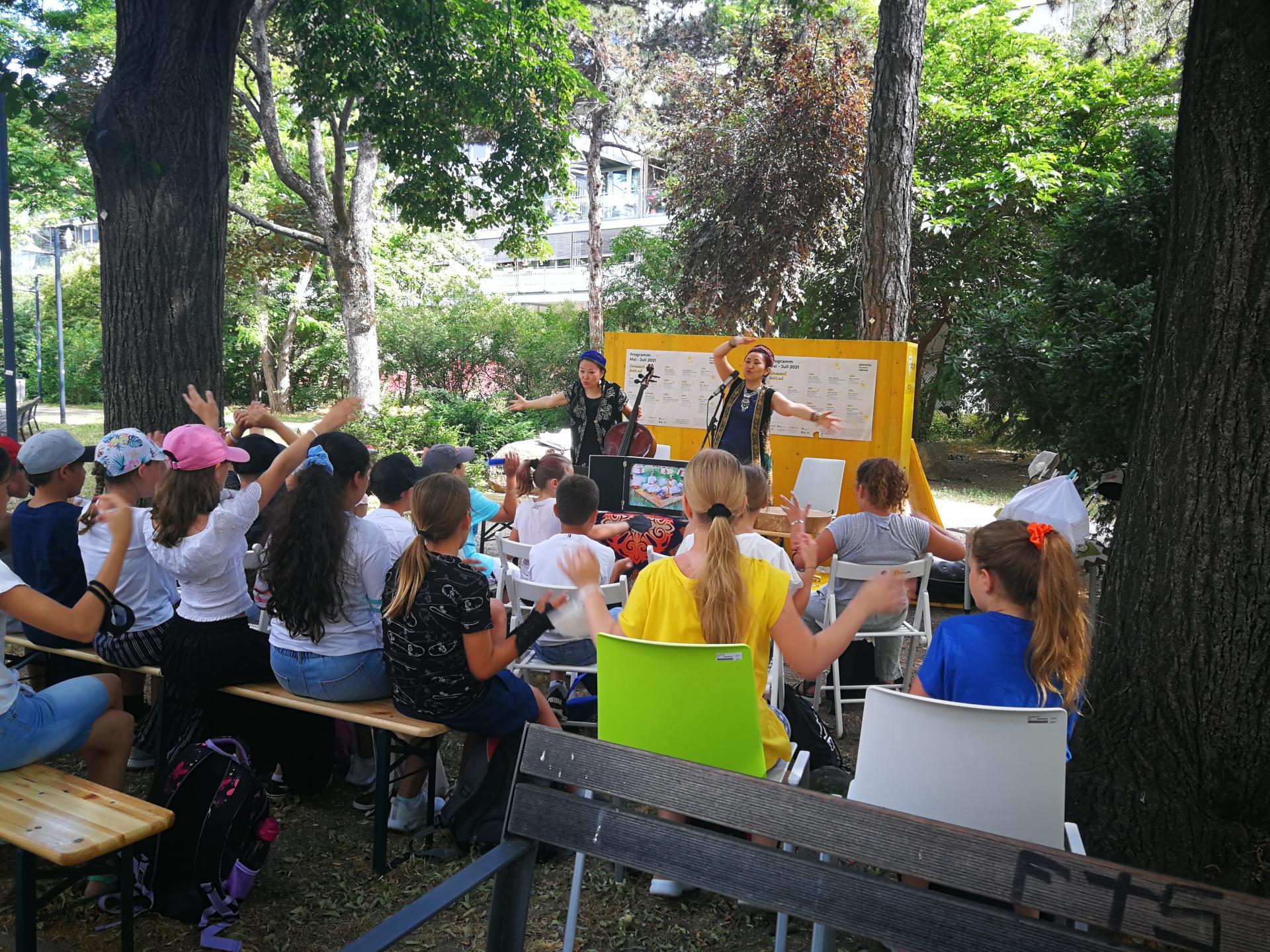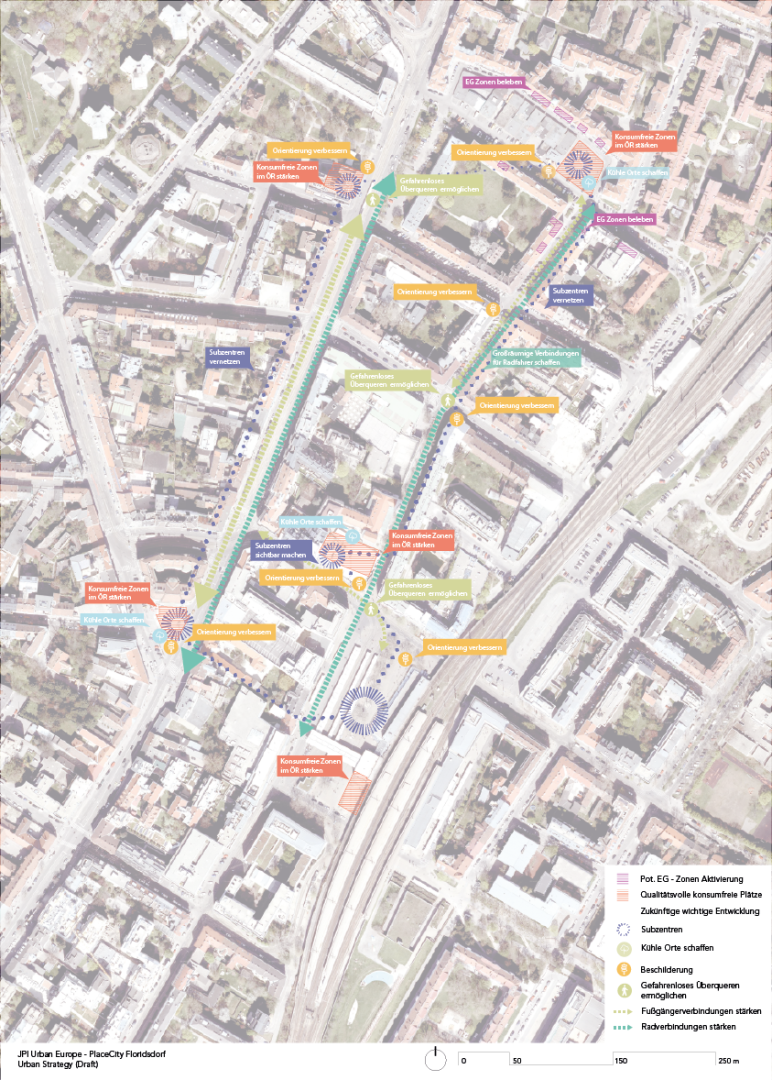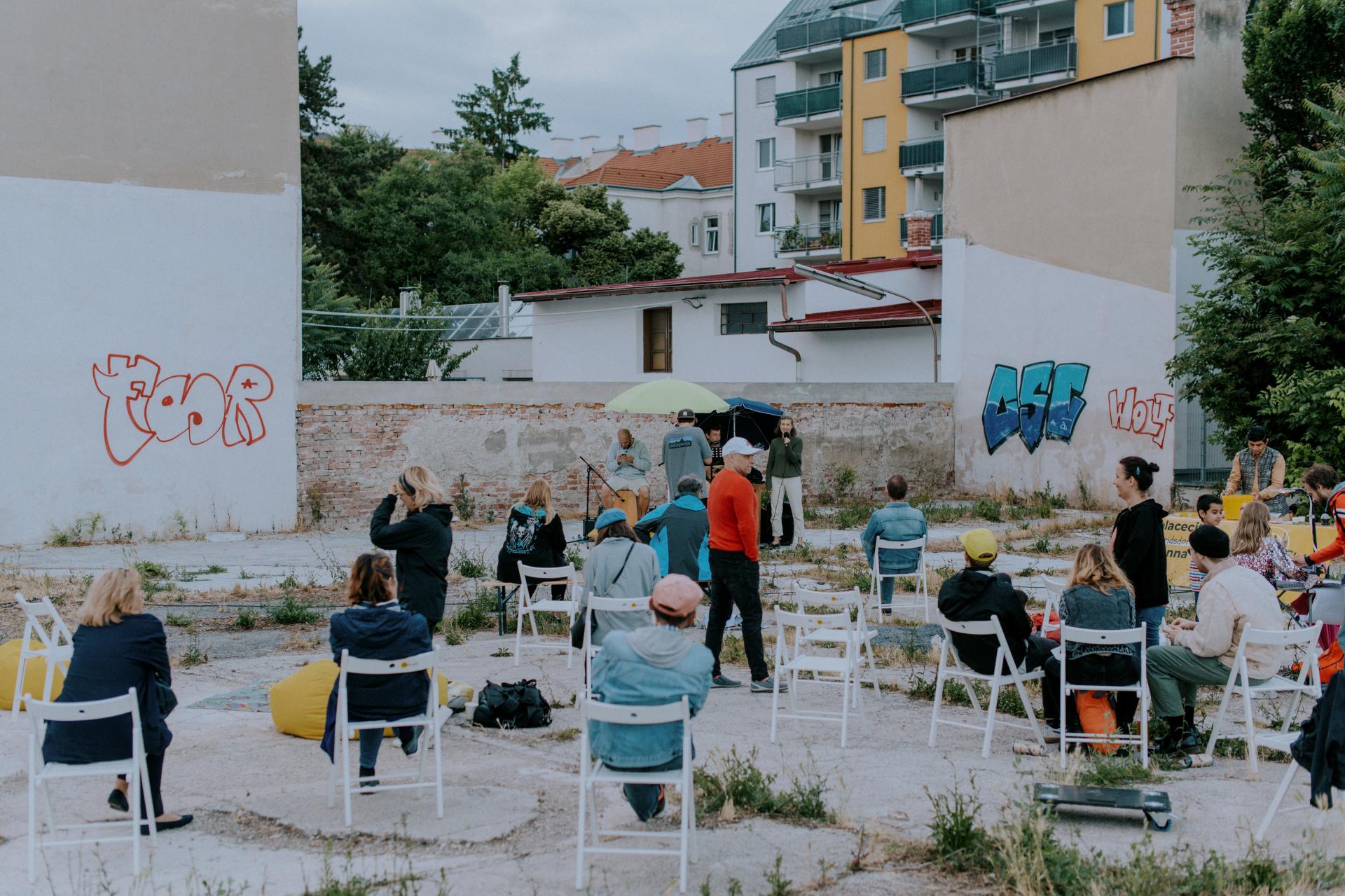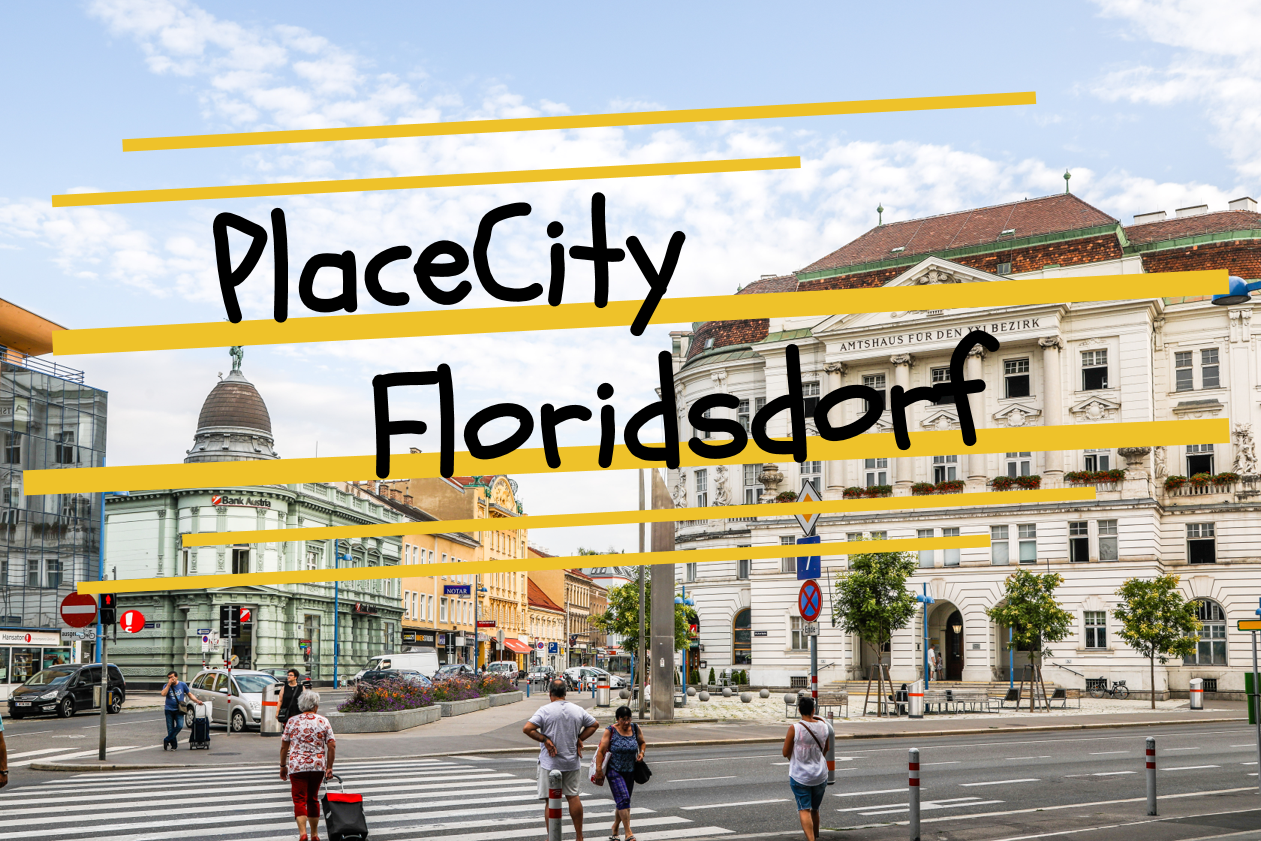PlaceCity Floridsdorf
Basic information
Project Title
Full project title
Category
Project Description
“PlaceCity Floridsdorf” tested innovative co-design methods and tools of inclusive, participatory placemaking through the initiative of the local community in the context of urban development and centre activation in Vienna. The aim was to develop a common vision to vitalize the urban space and make it useful for the local population with hands-on implementation strategies that remain active even after the finalisation of the project.
Geographical Scope
Project Region
Urban or rural issues
Physical or other transformations
EU Programme or fund
Which funds
Description of the project
Summary
The main objective of the project was to regenerate the historical centre of Floridsdorf, the 21st district of Vienna, through the long-term implementation of placemaking strategies.
Prior to PlaceCity, the Municipality of Vienna launched a policy for a ‘Polycentric Vienna[1]’ with the main goal to activate and regenerate historic centres of the 23 districts. With the project PlaceCity, the city aimed to conduct a pilot case study in the district of Floridsdorf[2], a large district in in the north of Vienna with 155.000 inhabitants, to activate one those centres. From February 2019, our studio superwien urbanism ZT together with the department of Social Design at the University of Applied Arts and the Department of Urban Development of the City of Vienna, explored and tested how placemaking works as a tool for urban regeneration and how Vienna and other cities, too, could use it in their everyday planning practice.
Already active Stakeholders in the pilot area should be activated, connected and integrated to the project PlaceCity. The numerous existing initiatives and projects should be focused and tied together to a strong, active and vibrant community. By activating urban agents and networks through open calls, public workshop formats and social programming, we wanted to develop a common vision to vitalize the urban space and make it useful for the local population with hands-on implementation strategies. As a result, the local placemaking scene was to be explored and understood. Tools for the regeneration of centres in Vienna should not only be tested, but new tools should also be developed. The results will be generalised and shared within the Placemaking Europe Network.
Key objectives for sustainability
The “Smart City Vienna” Strategy provides a socially just and sustainable urban vision for the whole city of Vienna. This includes the concept of short distances which directly influences ways of mobility the citizens chose. As distances get smaller, walkability is enhanced automatically.
PlaceCity Floridsdorf directly works within this strategy as it aims to form a spatial network of short distances with activities to be located within short reach from another by creating a sequence of attractive squares and lively places that can be reached on foot within a maximum of 15 minutes.
Through the project “PlaceCity Floridsdorf” citizens were encouraged to deal with issues relevant to the future, also raising awareness for the "Smart City Vienna" strategy. This can encourage residents to develop their own visions of the city of the future, if the used tools can involve them in a dialogue and inspire them to become involved or active.
The project also aimed for non-invasive and temporary change that doesn’t require physical transformation but rather works with what’s already there, visualising the possibilities and opportunities of the local spaces as they are.
Key objectives for aesthetics and quality
The project’s aim was researching methods of placemaking that involve the participation and activity of the local community. The more quality public spaces provide, the more citizens are willing to participate. Public space should be intuitively usable and provide a safe and comfortable surrounding for the community. Often enough the potential of public spaces is overseen and needs to be spawned first in order to bring it to peoples’ attention. Placemaking thus not only improves (public) spaces but also builds and strengthens communities around these places. Rather than achieving this through the physical transformation and renewal of the area, methods of placemaking focus on softer, less tangible but all the more perceptible change within the sense of belonging and ownership.
Through this, the public spaces and thus the centre of Floridsdorf can become a friendly and vibrant area perceived as the district’s “living room”: Here, people should be able to relax, meet up and connect with their neighbours. The way of accomplishing this was through activities that happen in the spaces already there, implemented by people and organisations from within the community. It uncovers the unlocked potential of the spaces and promotes the simplicity for change to be initiated. This was made possible through an open call, which people could submit their ideas for actions and activities to.
Key objectives for inclusion
The whole project focussed on generating a strong inclusiveness on a multi-dimensional level. For this, the project earmarked a structured process design in phases with the project's objectives remaining open to be created with and by the stakeholders from the community. It was important to reach as many different stakeholder groups as possible and also be accessible to everyone. This was facilitated through a diverse communication strategy, acting both online and offline within the local area. This way a broad range of people of all ages and backgrounds could be reached, which was necessary to tailor the project exactly to the locals’ needs and create equal opportunities. For the project’s success it was key to maintain accessibility to all interested parties alike. It was necessary to offer financial aid alongside know-how, as some of the permissions for activities required fees to be paid. This provided equal opportunity and allowed for a broader range of people to be able to participate.
The project intended a structure that would gradually allow the community to become more independent from the project team's lead: starting with participation, which then evolved into involvement in the project, leading to taking action oneself and becoming placemakers for their own. Eventually it allows for the people involved to pass on the knowledge so it would stay in the community and grow, even after the retraction of the project team. For this sake, a set of projects was made sure to continue further on after the projects end. The team also produced a handbook with helpful information about organising actions in public spaces gathered from the implementation phase.
The project allowed for the production of a planning process focussing on local empowerment that can stand exemplary to similar future projects desiring the community to gain a sense of ownership and responsibility towards the public spaces within their own local area.
Results in relation to category
The power of the project is revealed by the multidimensional outcome it achieved on different levels: activation not only happened on a spatial degree, but also in various social dimensions, which again fostered the multilateral exchange of knowledge. A set of versatile spaces could be activated through the project, including parking lots, parks, plinths and also urban voids. The activities ranged from concerts, topic related movie nights and a diverse children’s programme, but also offered workshops and fun leisure activities such as a table tennis rally. Some of the implementers of the open call were neighbours or people working in the area, who had no know-how of placemaking prior to the open call, but we also worked with more experienced local institutions and groups. The resulting exchange created valuable additional input for all involved parties alike and facilitated remaining relations between participants. Several projects and activities commenced during PlaceCity are still ongoing and some participants are continuing to use their knowledge and experience to repeat activities or initiate new ones, proving the lasting impact the project accomplished.
In addition to these soft but important developments, several factors were launched to ensure continuity of the project’s impacts even after its conclusion. A multifunctional mobile furniture was developed and built in cooperation with the public library. After the completion of the project it was handed to the community to be used free of charge, managed by the public library. It is accompanied by a handbook, which explains its handling and also contains tips and learnings on planning activities in public space concluded from the implementation phase. These are an important tools to maintain support to future “wannabe-placemakers” even after the end of PlaceCity and therefore the withdrawal of the project team. It also conveys the continuous spread of the gathered knowledge beyond the project’s implementation.
How Citizens benefit
In the process, various existing methods were used as well as new ones tested. In the first two phases, scoping and co-creation, these methods focused on information exchange through forums, panel discussions and workshops, which locals and regional placemaking experts were invited to participate. The resulting framework strategy earmarked a spatial frame and action plan, which was carried out in the testing and activation phase. Here, an open call was tendered for people to submit ideas for activating the various enabling spaces specified in the framework strategy. It was open for submission to everyone with a connection to Floridsdorf, individuals groups or organisations alike, resulting in just under 50 submissions. Fitting ideas were then implemented by the idea-givers themselves with the project team taking on a supportive and coordinating role, assisting mainly with know-how and support where needed or asked for.
This approach made sure for actions to happen really from within the community, rather than implementing activities top-down. It enhanced a feeling of responsibility and belonging to the “own” local public space and revealed possibilities to get active oneself. It encouraged people to overcome insecurities and existing obstacles, like the fear of penalties (interestingly this persisted on both ends, that of officials and citizens alike) or the seemingly excessive amount of tasks.
Physical or other transformations
Innovative character
The project followed an unusually experimental, fluid and proactive approach, which __ many challenges that needed to be met creatively and called for extensive cooperation and communication between many different involved parties. Through this, a level of trust between the team and local stakeholders but also local authorities could be established/formed, enabling new project ideas with immense/gesteigert possibilities as they work together closely and not opposing each other in terms of requirements and giving/taking.
Through the project it also became clear that any space could be converted into a meaningful place: all it requires is a programme and will and, most importantly, someone that takes on the initiative to activate the space.
The designed structure of the project saw for initiating these factors patiently so they can sprout and acquire strong roots, which can grow further over time until they’re inherited into the local community-culture.
Learning transferred to other parties
PlaceCity Floridsdorf tested many different ways of including and activating a local community to become aware of the possibilities surrounding them without having to physically transform spaces. The process’ structure can therefore be taken to many different places and even be initiated by people or groups with limited possibilities or little thematic background. The key factors of this approach are a devotion to engage in a cooperative and highly communicative way, to stay proactive towards arising ideas and changes and to meet them creatively.
Depending on the level of professionality of the team, the project’s process can be applied as a whole and adapted accordingly, fitting the requirements and capabilities of the space or area, the project team and the local community. More importantly though, a variety of placemaking and participation tools were tested and developed throughout the project. These tools are available open source on the website of placemaking europe to anyone interested and explained in a feasible way (visit https://placemaking-europe.eu/tools/ ). In order to pave the way for more collective and bottom-up placemaking in the future it was important to spread the conducted knowledge and make it available to a large number of people.

